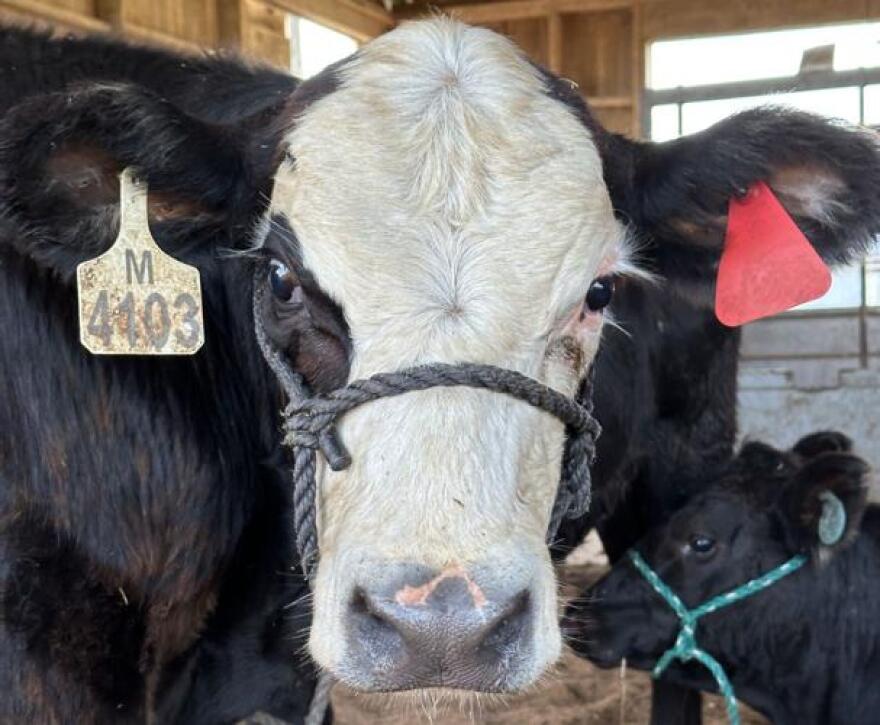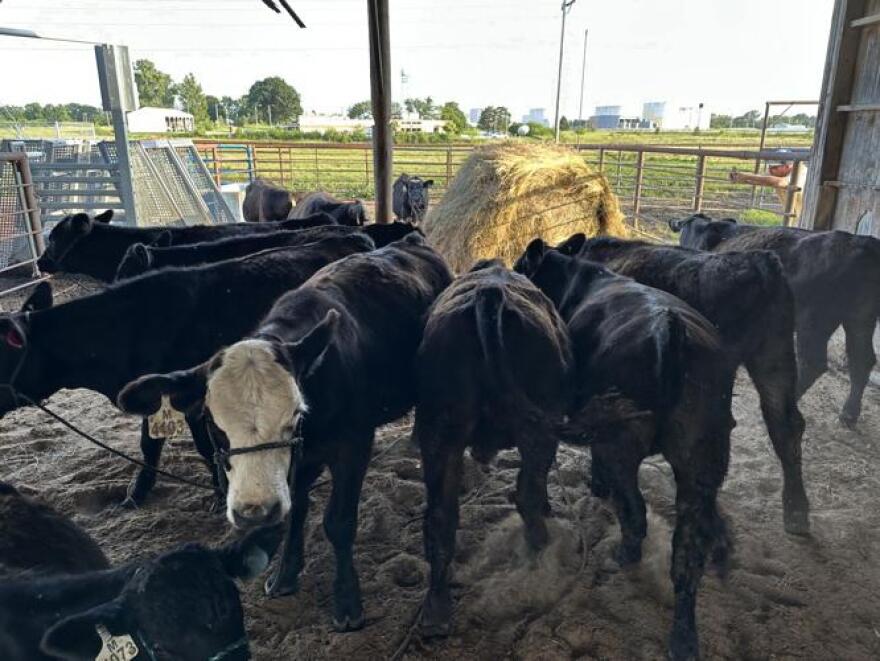Cattle farms and feedlots in Missouri today are populated by cows that are a far cry from those that roamed pastures 80 or 90 years ago.
Cattle back then were referred to as “buckle cows” – named that way because they only went about as high as a rancher’s belt buckle. But in the 1950s, when cattle herd numbers were low, cattlemen began putting more emphasis on cows’ “frame size,” or their height.
In the past few decades, with improvements in genetic technology, farmers have been able to measure extremely specific qualities in their cattle. This has led to a shift from increasing the frame size of cattle to increasing the “performance,” or weight, of cattle. That means cattle aren’t getting taller, but heavier.
The U.S. cattle inventory hit its lowest level in 73 years in 2024, largely as a result of recent droughts. The solution isn’t as simple as just breeding more cows, because cattle producers have to balance the amount of cattle they hold back to reproduce, and the amount they sell off to feedyards to generate revenue.
Hear more about the beef supply chain on the Business Brief podcast
Don Close, a senior animal protein analyst at agriculture publication Terrain Ag, said the industry has been shifting breeding practices to mitigate the recent cattle shortage.
“Being the lowest we've been since 1951, the industry has elected to make cattle bigger, to compensate in pounds what we're losing in head count,” Close said.
Close estimated that the average live weight of U.S. cattle increases by about eight pounds a year. The carcass weight, or how much cattle weigh once the hide, bone and other inedible parts are removed, increases by about five pounds a year.
But there has been a particularly noticeable spike in the past decade or so, caused by incentives from meatpacking plants.
This trend can be seen through what’s known as the hot carcass weight discount, which is the payout reduction cattle producers receive when carcasses exceed a meatpacking plant's maximum weight. As a result, producers try to get their cattle as close to that weight limit as possible without exceeding it.
Jamie Courter, the state beef genetics specialist at University of Missouri Extension, said that when she first started in the industry about 10 years ago, that weight limit was 1,000 pounds. It’s been creeping up ever since. The limit went up to 1,050 pounds, then 1,100, and now some plants have improved their technology enough to accept 1,200-pound carcasses.

“We keep pushing what we're willing to accept, as far as size of feedyard steers, higher and higher,” Courter said. “The packers are incentivizing the feedyards and the commercial cattlemen to do so, and — right, wrong or indifferent — commercial cattlemen are going to chase that incentive because that impacts their bottom line.”
Higher cattle weights also have an effect on consumers down the line. Certain beef cuts, namely ribeye and loin, are getting too big to be easily packaged. Because the cows are bigger, these cuts are larger, meaning they have to be cut thinner and with more surface area than they used to be to maintain a consistent weight.
But Close said these high cattle weights are, in large part, a good thing for beef consumers.
“If we were to limit weights on the cattle, it would limit the total of beef production, limiting supply, that would drive price higher,” Close said. “So in a backwards kind of way, yes, it's actually supporting … consumers, because it keeps more product available to the counter.”
Beef is getting more expensive, with the average price of ground beef hitting a record high of $6.12 per pound in June. However, bigger cows also means better quality. Bigger size leads to higher fat content and better marbling. Close estimated that 82% to 84% of all beef is of choice or prime grade, which lines up with consumer tastes.
However, researchers and cattle producers have said the current trajectory of beef performance isn’t sustainable. Courter said it’s important to consider the economic factors of farming cattle when trying to breed for size.
“We can't have 2,000-pound mature-weight cows, because those cows eat more, which means you need more acres to raise that cow in a year,” Courter said. “Which means, if you don't buy more land, you have to decrease the number of cows you have, or you have to increase how much hay or corn or whatever you're buying to sustain that 2,000-pound cow.”
Doug Frank, co-owner of the Frank/Hazelrigg Cattle Co., said that cattle performance is reaching a threshold. In recent years, this has led farmers to start analyzing other significant traits.
“Maintenance costs are going up, and maybe we're past the point of the most efficiency there,” Frank said. “We're probably at the limit of what our commercial customers have for resources, and we're a lot more interested in other traits.”
Where farmers used to look towards breeding for weight, some are now beginning to place importance in feeding efficiency. Farmers are tracking relative feed intake, which measures how much weight a cow gains from a certain amount of feed. Those that need less food to gain weight are more profitable for farmers.
Cattle performance may be starting to even out, but Frank highlighted the industry’s ability to continue delivering product, even during a downturn in inventory.
“Beef is not cheap today, but … we've increased production pretty substantially in the U.S. beef industry,” Frank said, “and we've done it with the lowest cow numbers that we've had in (decades)."






